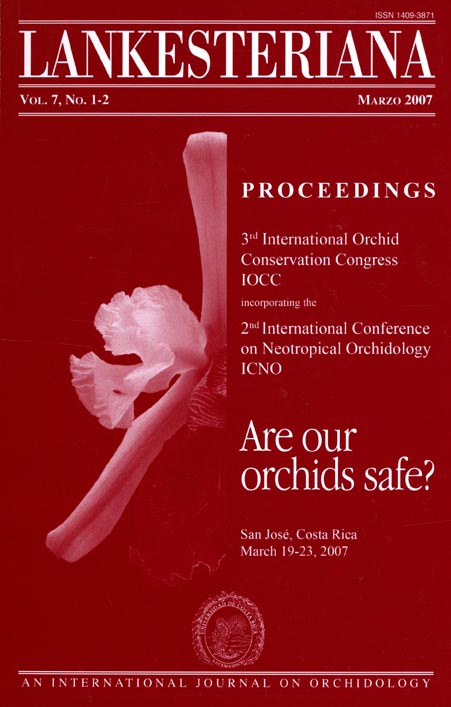Genetic and morphological variation in the Bulbophyllum exaltatum (Orchidaceae) complex occurring in the Brazilian “Campos Rupestres”: implications for taxonomy and biogeography
DOI:
https://doi.org/10.15517/lank.v7i1-2.18446Palabras clave:
allozymes, Bulbophyllum exaltatum, Cadeia do Espinhaço, campo rupestre, genetic variability, geographic barrierResumen
Bulbophyllum Thouars is a pantropical genus. It is one of the most species-rich genera of the Orchidaceae, with ca. 1.200 species (Dressler 1993). The genus pre- sents myophily (pollination by Diptera) as pollination syndrome. Because orchid species are mainly self- compatible, we expect that fly-pollinated orchids pre- sent low variability within the populations and high genetic differentiation among conspecific populations, due to the reduction of the gene flow (Borba & Semir 1998, Borba et al. 2001). This could help to explain the high number of species in genera of fly-pollinated orchids, most of them with restricted distribution.
Descargas
Descargas
Publicado
Cómo citar
Número
Sección
Licencia
Conforme con las Políticas de Acceso Abierto promovidas por la Universidad de Costa Rica, los derechos de autor de todos los artículos publicados en Lankesteriana se encuentran bajo una licencia Creative Commons y pueden ser descargados gratuitamente. Los derechos de autor y de publicación pertenecen a la revista bajo la licencia CC BY-NC-ND 3.0 CR.
Before the publication of the materials submitted by the author(s) in LANKESTERIANA, the author(s) hereby assign all rights in the article to the Lankester Botanical Garden.





